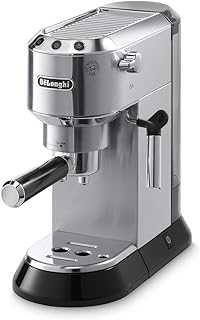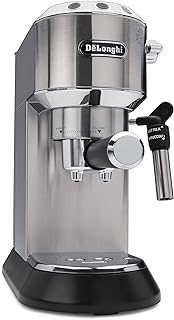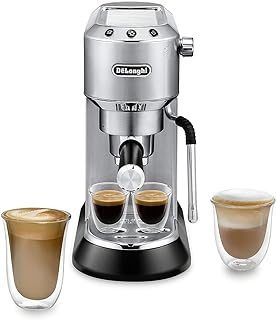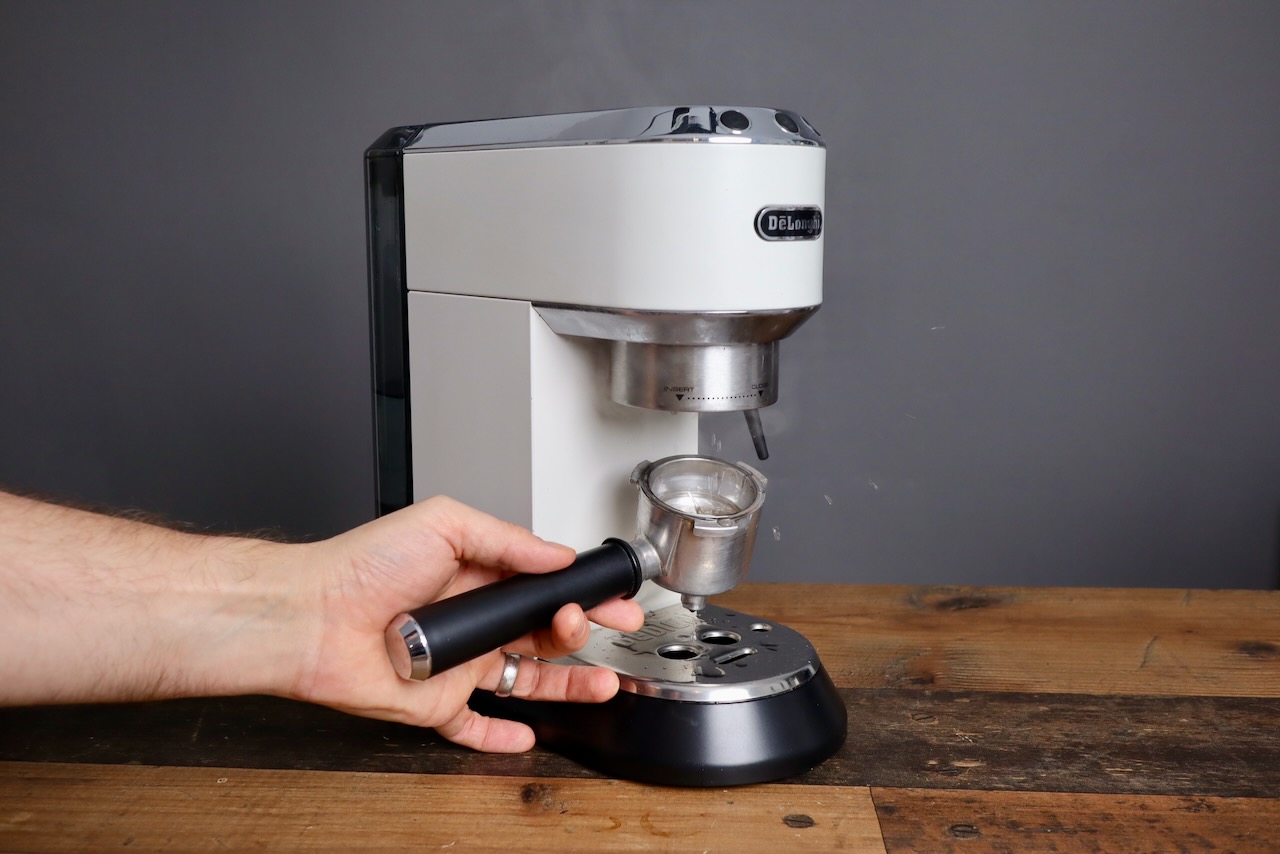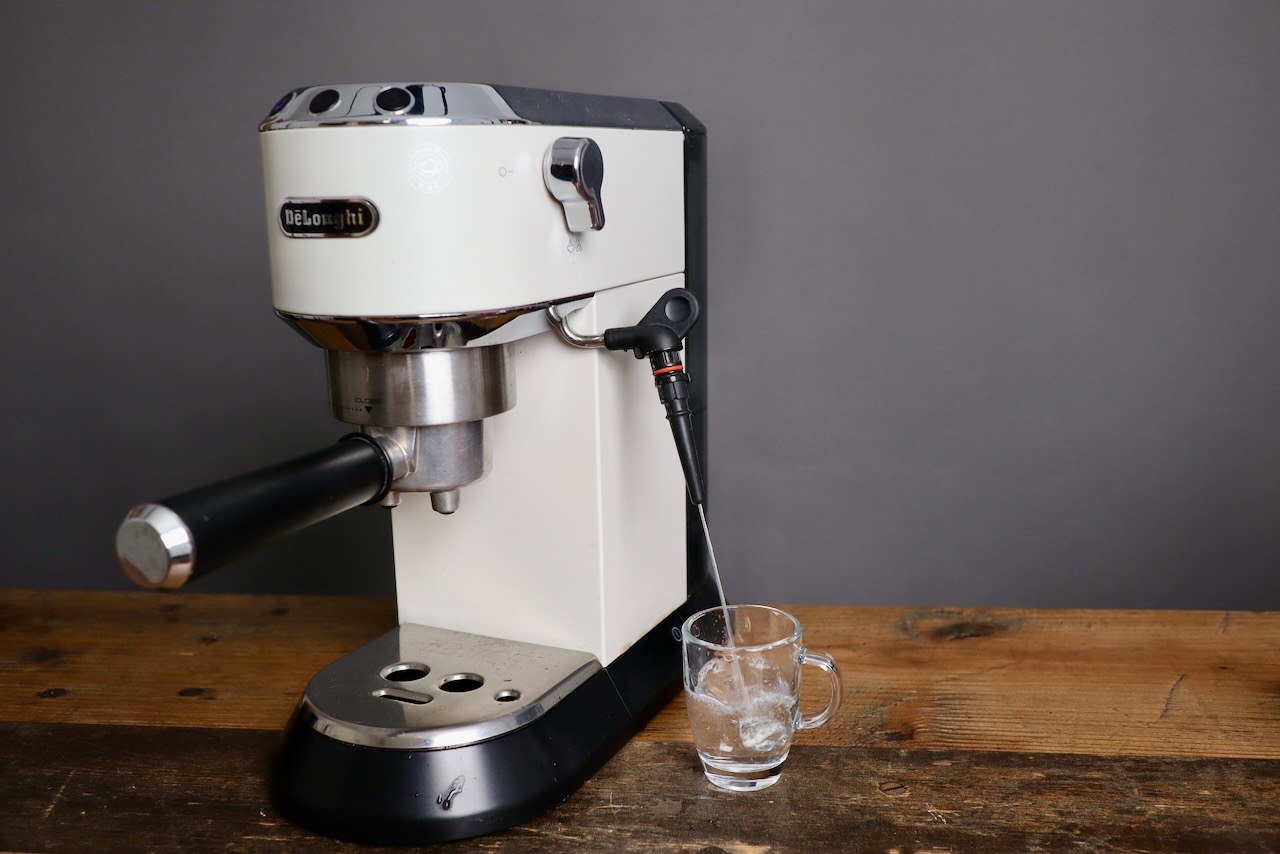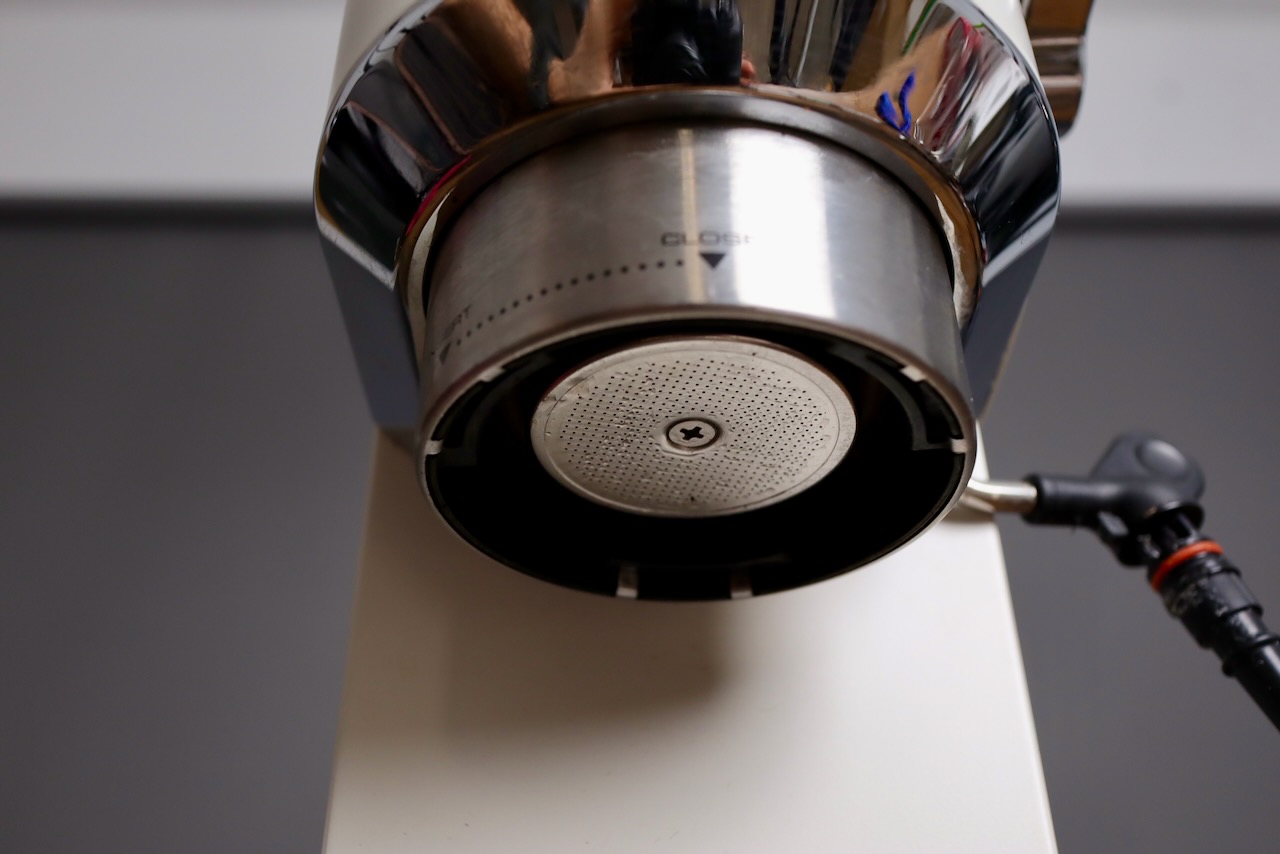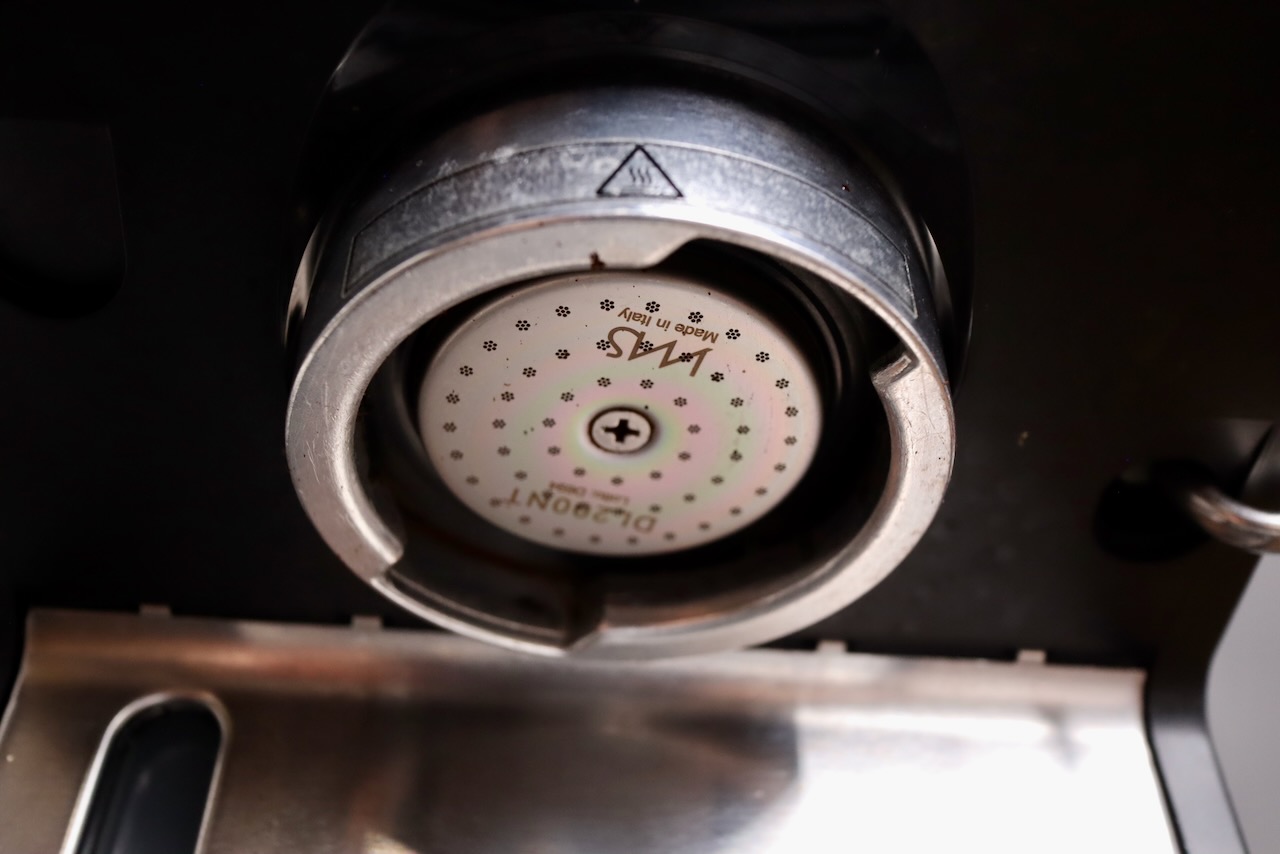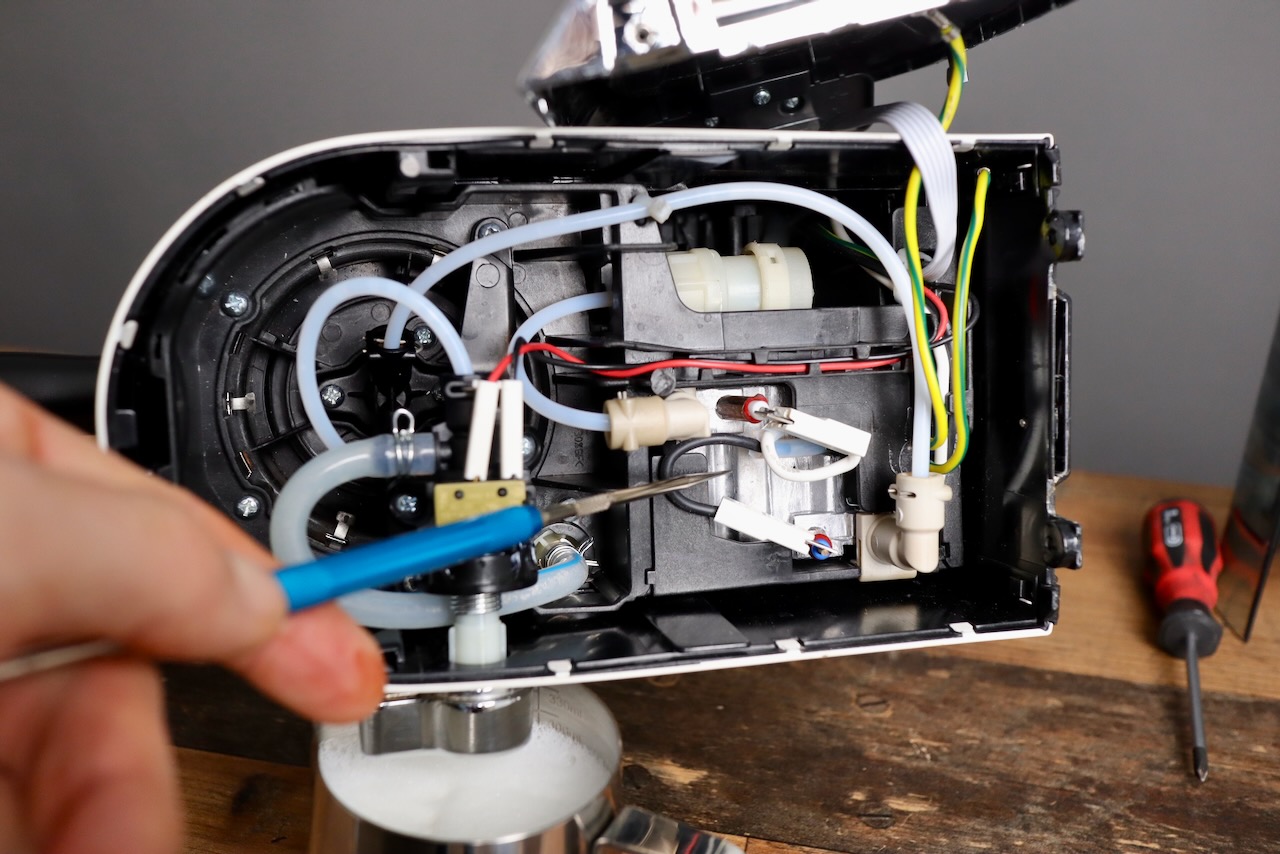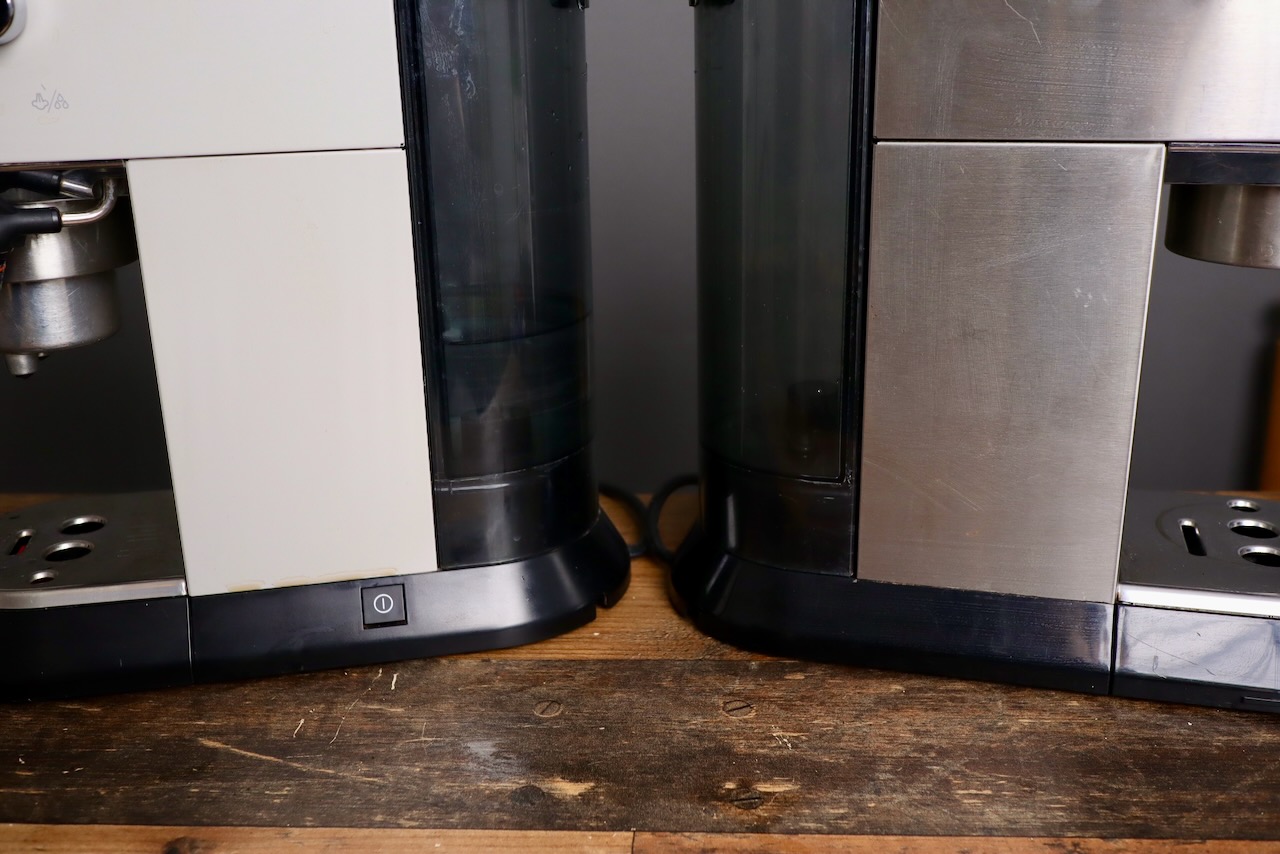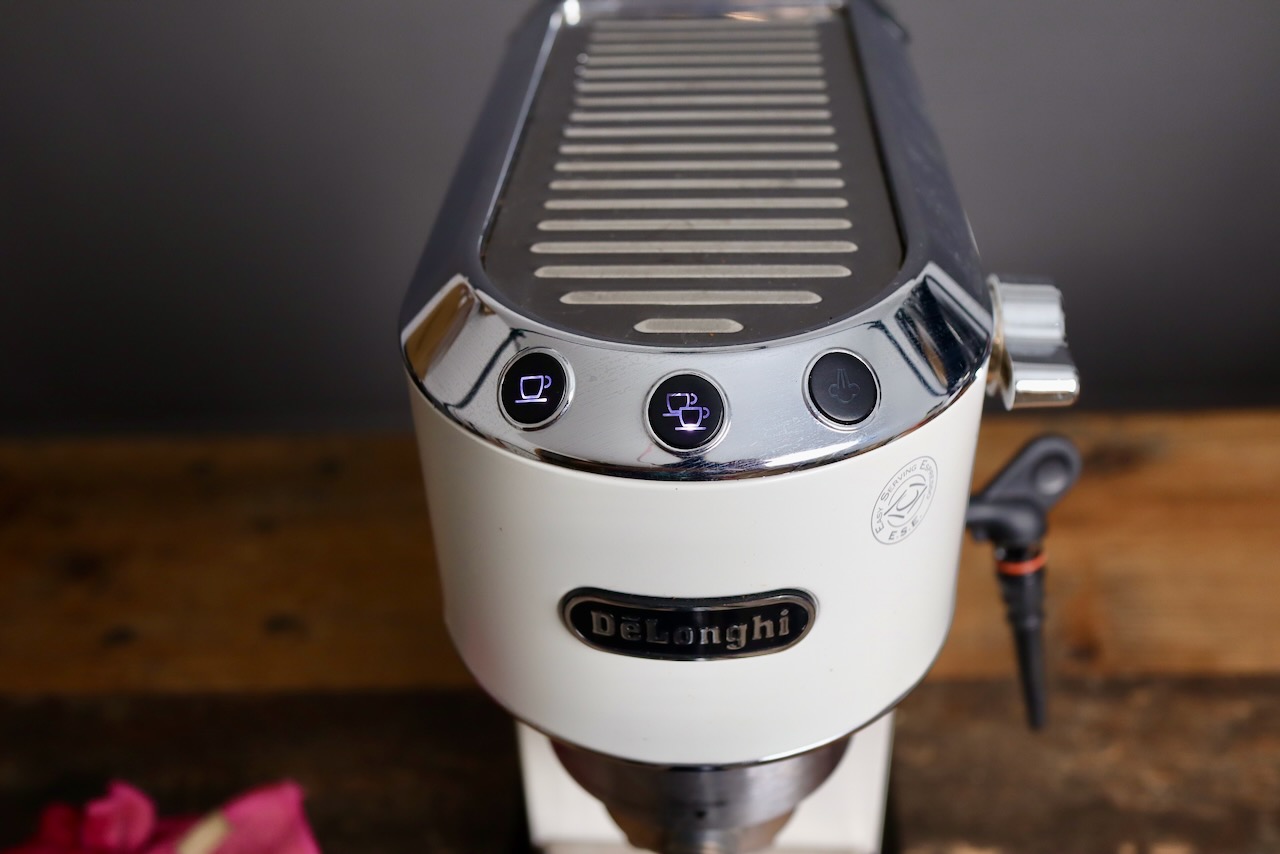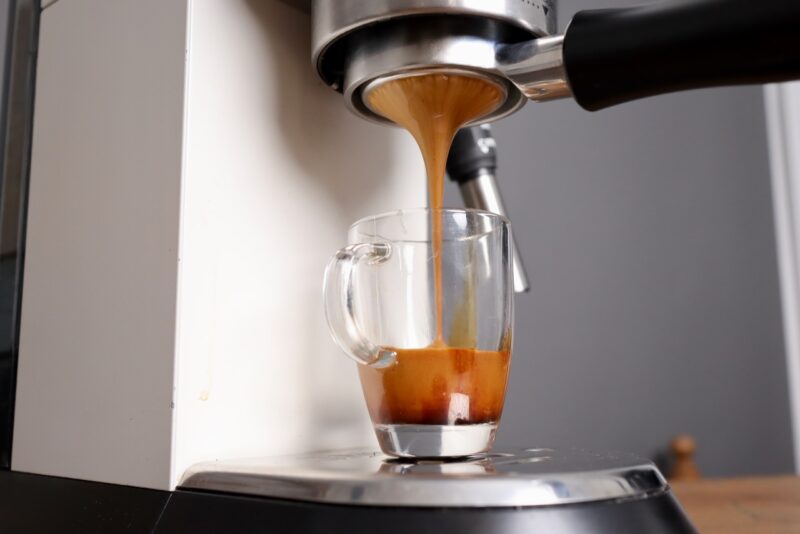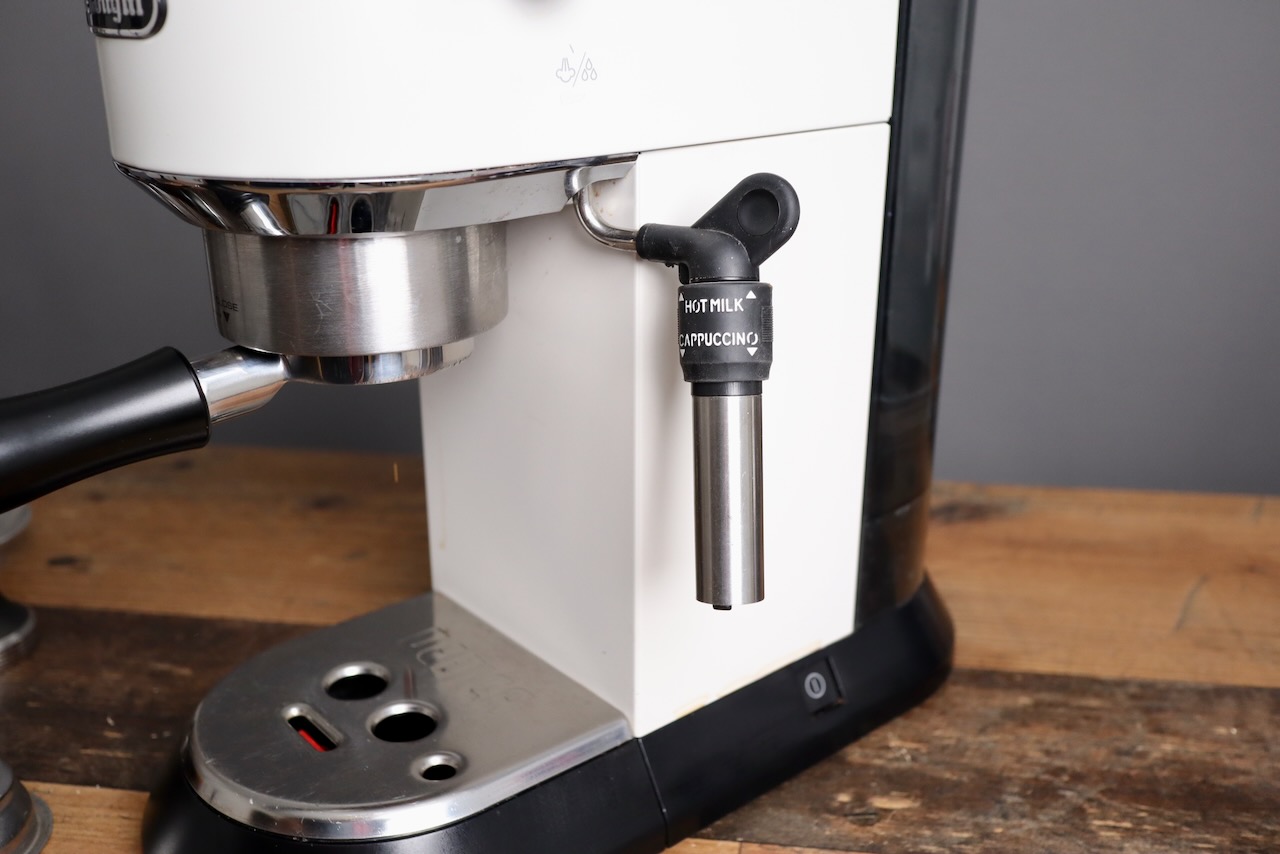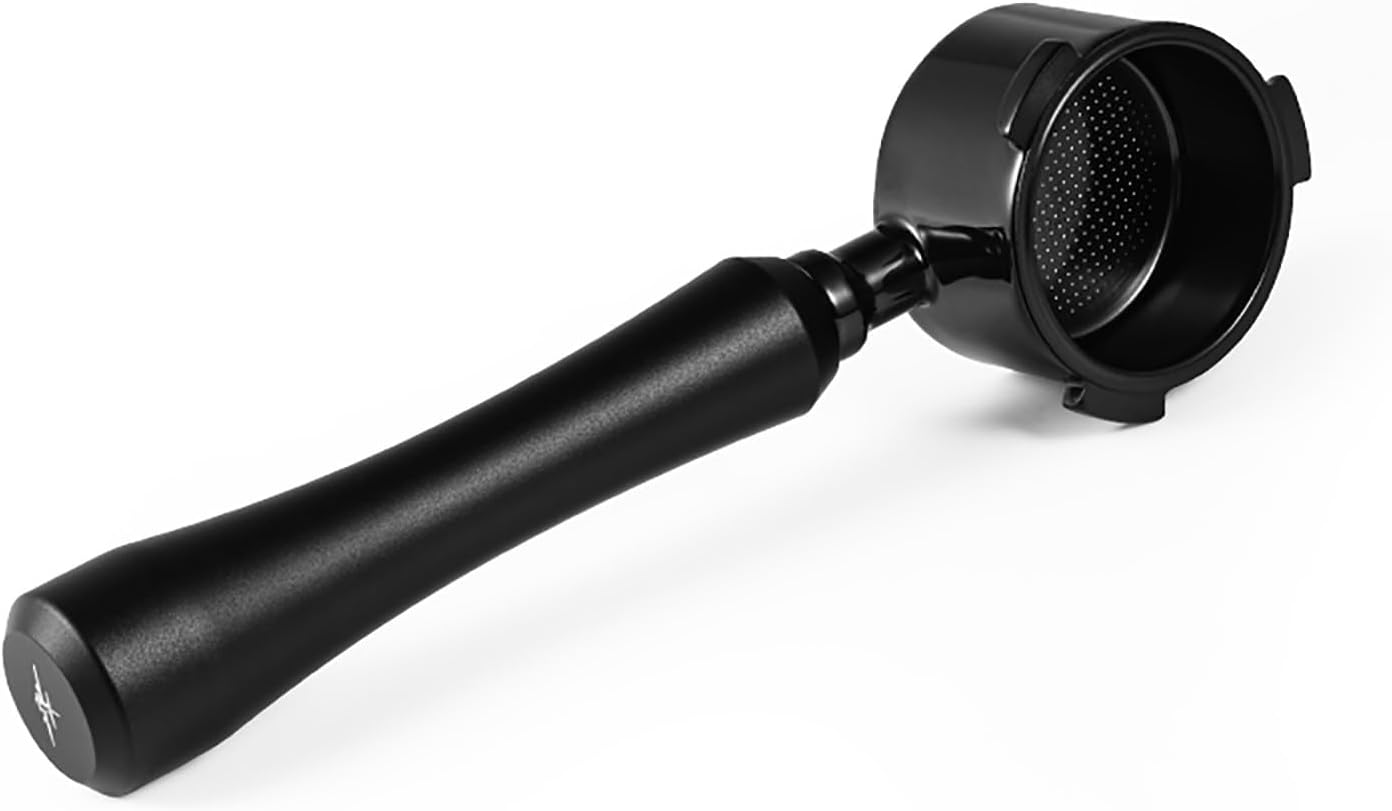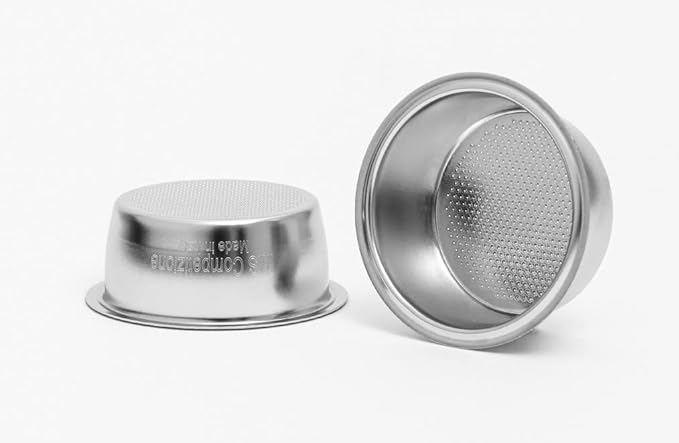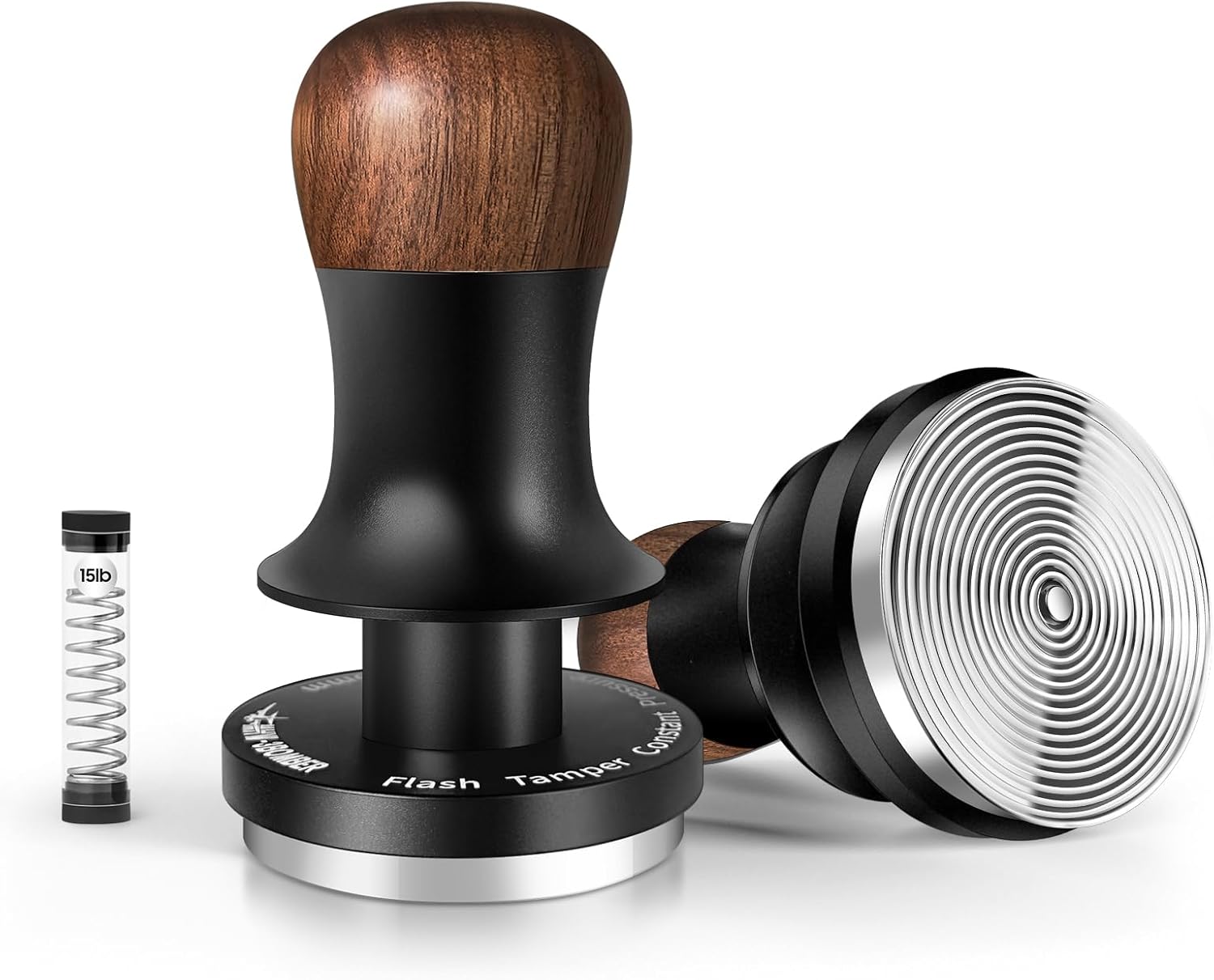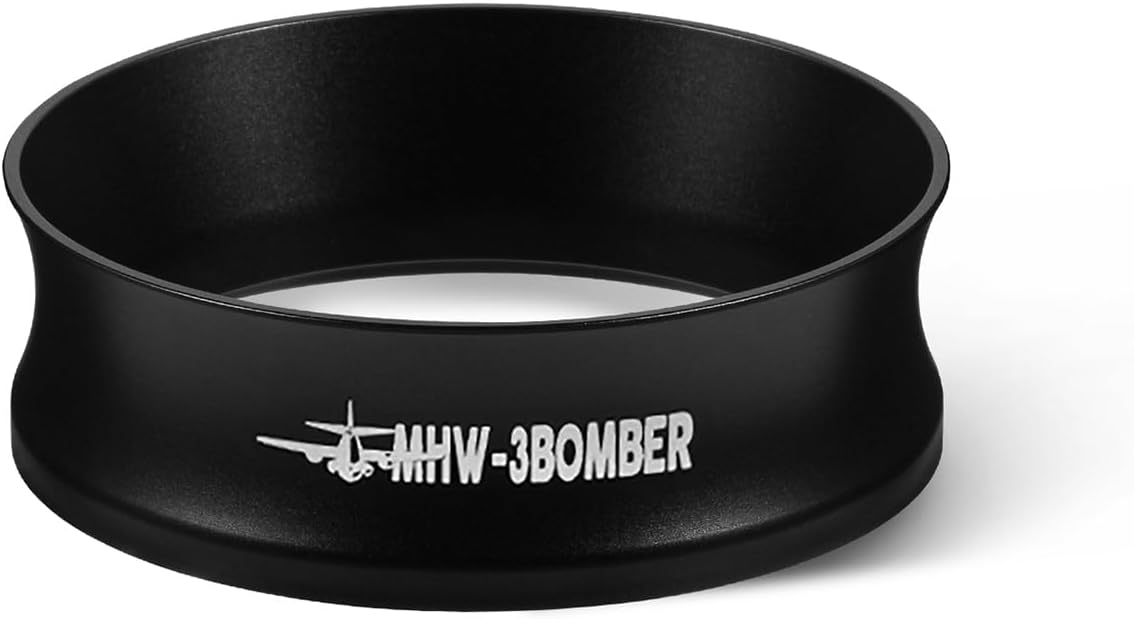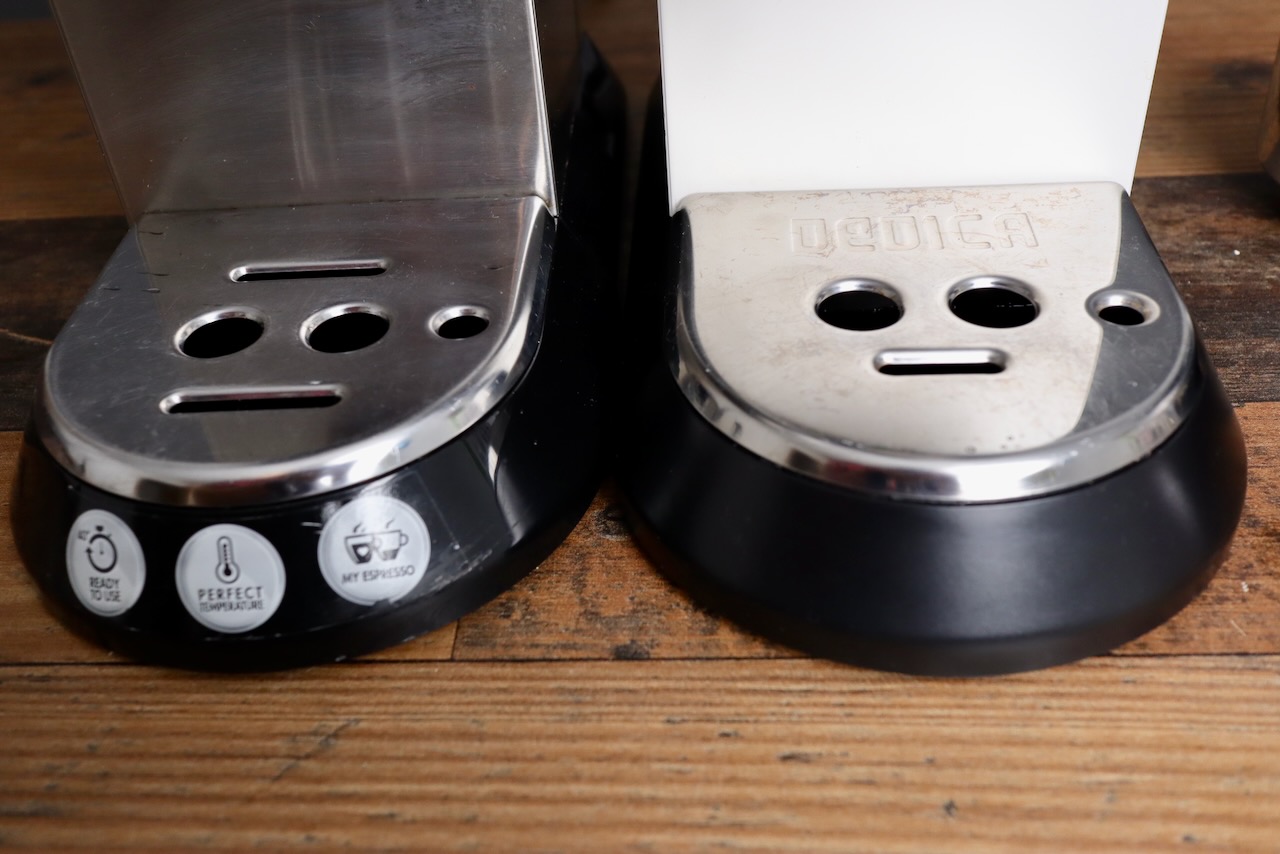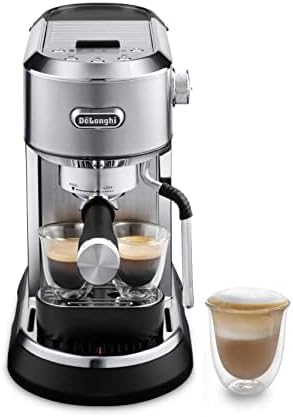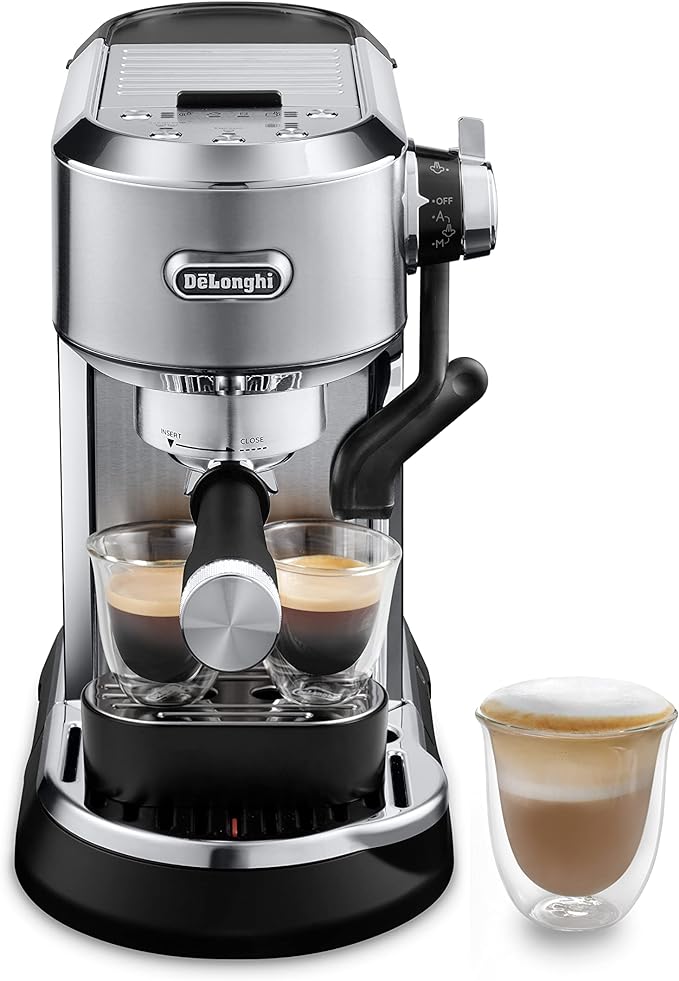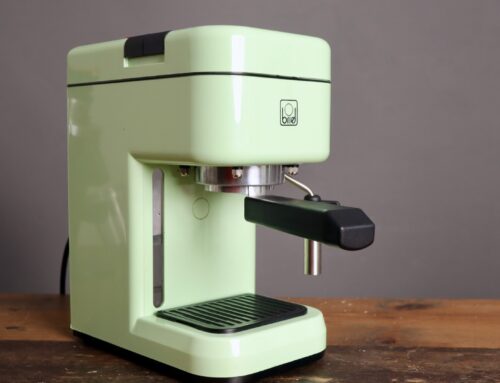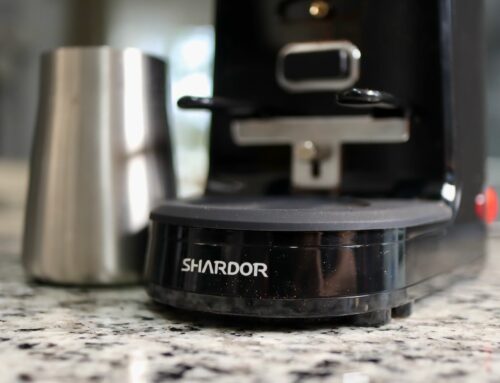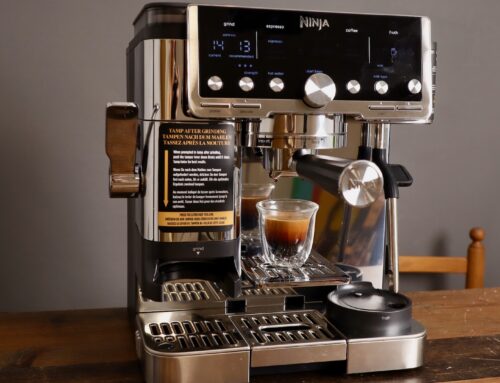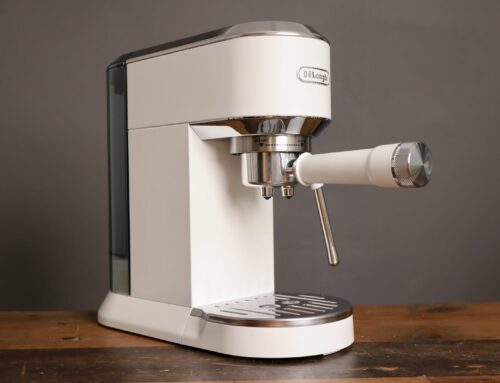Delonghi Dedica Review: Still Good in 2025?
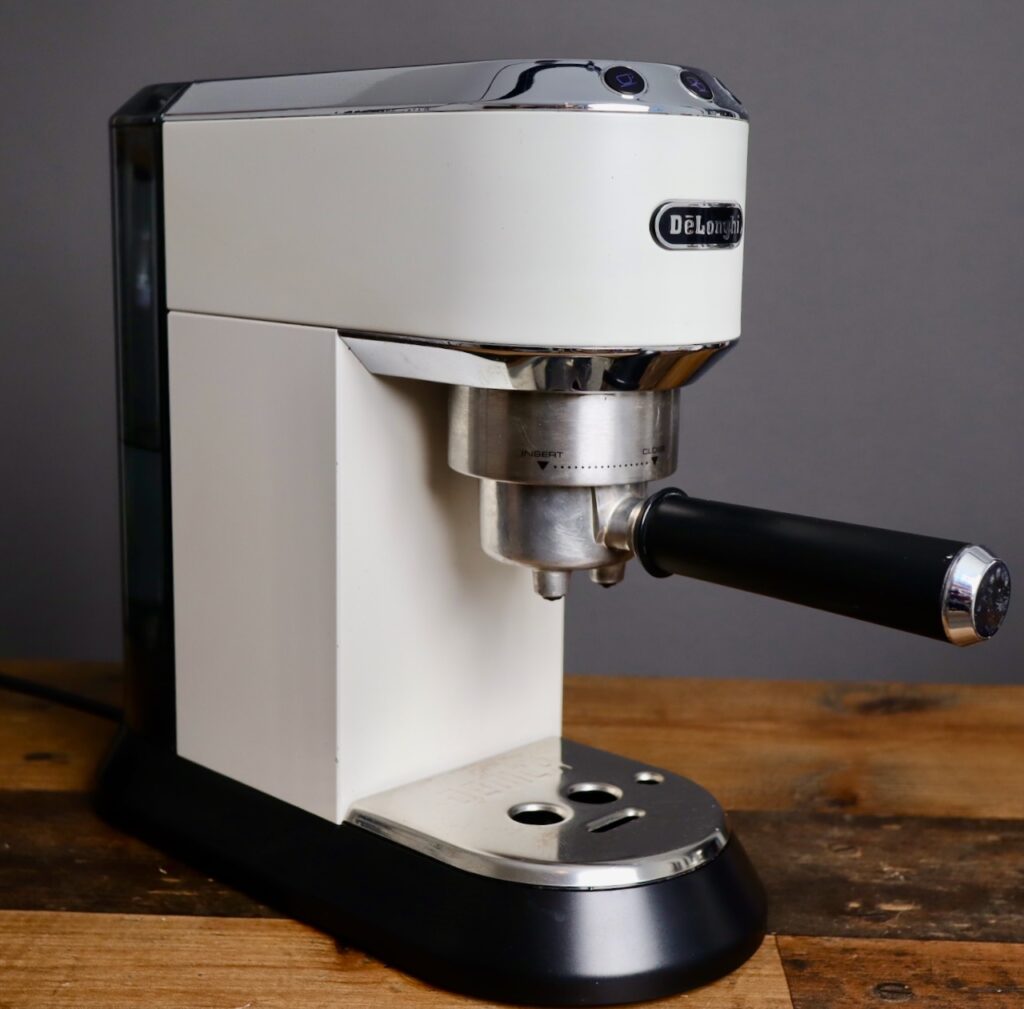
Is the Dedica still good today?
Let’s do a Delonghi Dedica Review, shall we? I am doing this review with a LOT of information packed into the pictures, videos, tables, and text. So I hope it will become a reference for you, in getting the best results from your Delonghi. Now then…
With the Dedica line of home espresso machines (EC680, EC685, EC885 and EC950), Delonghi has hit a homerun! The combination of a small footprint, low price, and good result in the cup has catapulted this machine to the top of many shopping lists. Let’s take a look at why this little machine is so well liked. And, I am packin
Delonghi Dedica EC680M, EC685R, Arte, Style – What Does it all mean?
Let’s get something out of the way. The original Dedica is the EC680M, and the M stands for metal. Since then, Delonghi has released the EC685, also called the Dedica Style, or Dedica Deluxe. The newest model is the EC885M, which is the Dedica Arte.
| EC680 | EC685 Style | EC885 Arte | EC900 Maestro | EC950 Maestro Plus | |
|---|---|---|---|---|---|
| M (stainless) | ✅ | ✅ | ✅ | ✅ | ✅ |
| BK (black) | ✅ | ✅ | |||
| W (white) | ✅ | ✅ | |||
| R (red) | ✅ | ✅ |
Temperature Settings: High, Med, Low
The Dedica offers 3 temperature settings: low, medium and high. I would suggest using the highest setting for the best extractions. Extracting at a high enough temperature is key for making a good espresso.
In fact, I would even suggest pulling one or two “empty shots”, or shots without coffee powder, just to make sure the portafilter and brew group are warmed up well. You ideally want all parts of the extraction to be at the same temperature, so it’s also helpful to warm up your espresso glasses ahead of time.
Volumetric Dosing
One really awesome feature that the Dedica offers is volumetric dosing. That means that the Dedica knows about how much water is running during the extraction, and will stop it according to the volume you program. This is a nice feature that was often reserved for much more expensive machines.
One tip to help the accuracy of your volumetric dosing, is to use the same beans and grind size each time. If you use older versus fresher beans, or grind coarser vs finer, the volumetric extraction will not work as well.
Reminders
One reason for the Dedica’s success are the reminders it creates. Its steam button turns orange to remind you to descale. This is based ONLY on the number of extractions it counts, not on any scale sensor. I would recommend setting your Dedica to “hard” water, so that you’re reminded more often to descale. Your machine will thank you.
Descaling needed
Cooling requested (open water/steam valve)
Additionally, the Dedica will remind you after steaming, that your thermoblock needs to be cooled down again. It will indicate this by having the indicator lights blink after steaming.
To alleviate this condition, just open up the steam wand, which will start the pump, and the water will cool down the thermoblock. The pump will shut off automatically, and you can flip the lever back.
Steam and Hot Water Spigot
Another nice feature of the Dedica is the aforementioned hot water spigot, which is also the steam wand. If you go to steam mode, it will emit steam for frothing milk. If you stay in coffee mode, the steam wand will emit hot water upon flipping the lever. Pretty convenient for tea and americanos!
Build and Design
People always want to know about the build quality and machine design. Let’s have a closer look at the Dedica to see how the build quality is, starting with the brew group.
What size is the brew group?
First of all, we should talk about the brew group. This is important! Based on the size of the brew group, you will buy all your potential accessories, such as basket, bottomless portafilter, and tamper.
The Dedica, like EVERY other Delonghi espresso machine, has a 51mm brew group. That means that the inner diameter of the basket is 51mm, and the portafilter is built accordingly. The shower screen is slightly smaller, at 50.5mm.
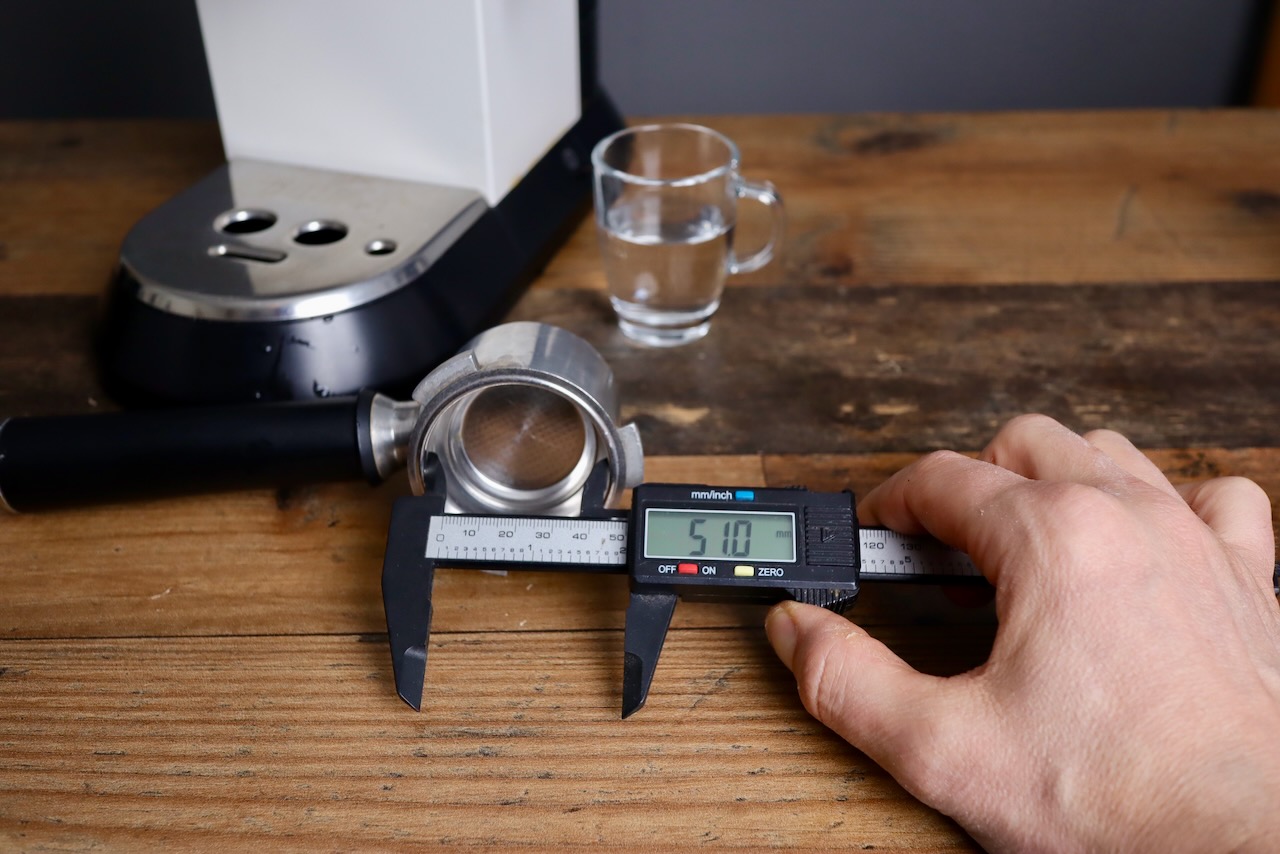
The brew group is by the way built of plastic. Delonghi builds all of its boiler machines with an aluminum brew group, to transfer heat to the portafilter, but it does not do so for the thermoblock machines.
What is a Thermoblock?
A thermoblock is a thick chunk of aluminum, with stainless steel tubes running through it. The whole block is heated up, but the water just runs through the stainless steel lines.
You can think of a thermoblock in an espresso or coffee machine like a tankless water heating system you might have installed in your home. The water is not heated until requested. Then, when the pump starts pumping water, the very narrow stainless steel tubed lines get heated up, and so does the water.
Contrast this to a conventional hot water heater that many homes still have, which heats up water not on demand, but rather when a sensor notices that the water has cooled down too far. Then it heats it up, until it reaches the upper temperature sensor.
Both thermoblocks and boilers have their pros and cons. A thermoblock is faster and more efficient. A boiler however can heat the portafilter through the brew group, which is a nice plus.
15 Bars of Pressure?
No, this machine does NOT run at 15 bars. I have measured it. It comes up to 12 bar at the absolute maximum.
Do you want 15 bars of pressure? No way. That would be too much pressure for the system, and WAY too much for a proper espresso extraction. For espresso, you want more like 8-9 bar. You can achieve that, just by dosing correctly, and finding the right grind.
So why do they market the machine with 15 bar of pressure? It’s just a marketing ploy, that apparently works. And sure, the Ulka pump could provide 15 bar, but it’s capped. We don’t want it generating that much pressure.
What Materials are used?
Anyway, let’s move on to materials. The Dedica is made primarily of metal and plastic parts. The body for instance, is made out of steel. The colored models are made with steel which has been painted, while the stainless steel model has a different grade of steel (stainless).
The base of the Dedica is made out of molded plastic, as is the drip tray. The drip tray cover is however a polished stainless steel.
The water tank is obviously plastic too, which is the norm. The lines inside the Dedica are silicon or high pressure type, and the Dedica uses an Ulka EP5 water pump.
The upper lid of the Dedica is made mostly of plastic, and it houses the 3 buttons to operate the machine. These are nice tactile buttons with white indicator lights. They allow you to start a 1 cup or 2 cup extraction, or go into steam mode. Just hold down either of the 1 cup or 2 cup buttons to program the volumetric amount you want in your cup.
As mentioned before, the thermoblock is made of aluminum, with stainless steel lines. So, your water is going from the water tank, through silicon hoses to the water counter, then the Ulka pump, then via high pressure line to the thermoblock, and from there it goes via high pressure tubing to the valve that sits atop the brew group. From here the water can either exit through the brew group after making it past an expansion valve, or it can go to the steam wand, if the lever is actuated.
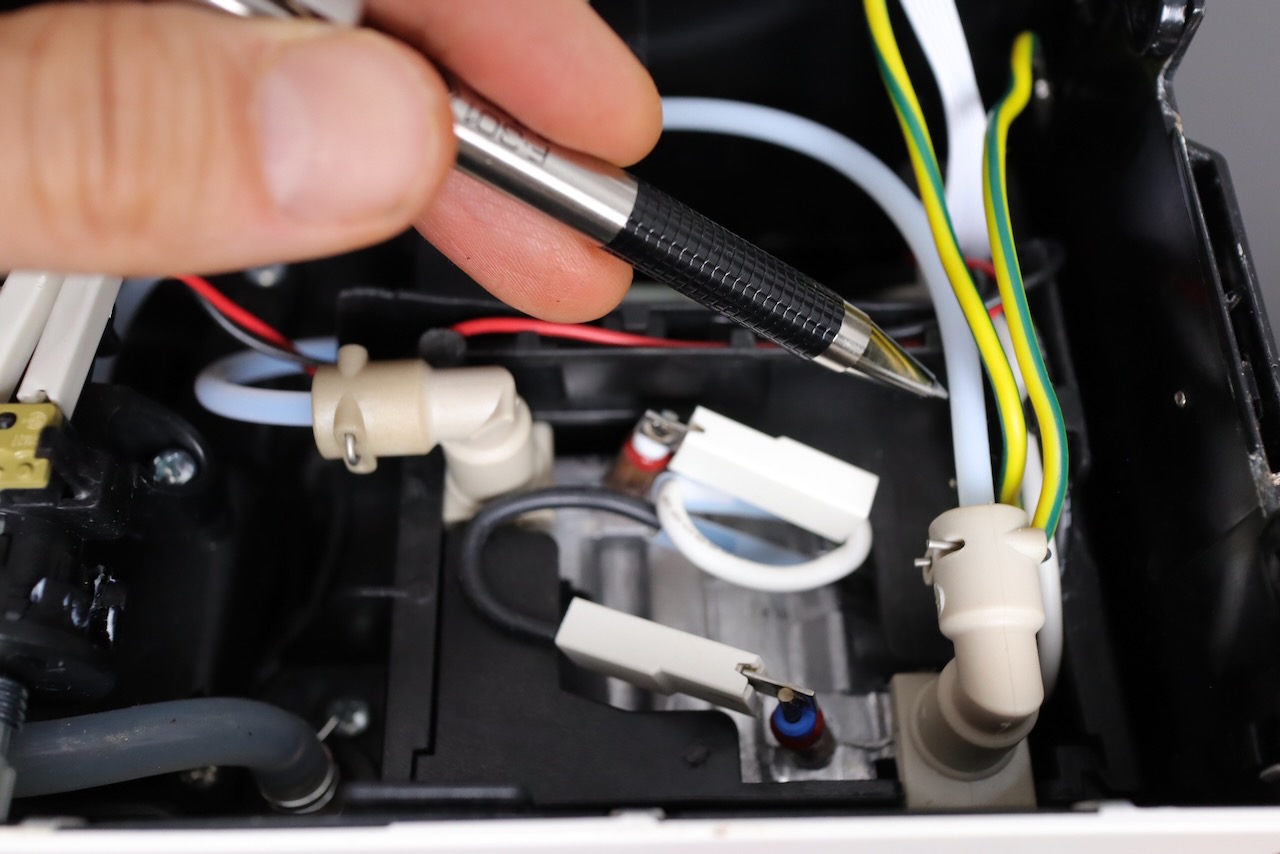
Delonghi Dedica pressure line
What are the Dimensions and weight?
The Dedica is truly small, at just 6” wide and 9 pounds. While that does require two hand operation while putting in the portafilter, it also allows you to fit this just about anywhere – even with limited kitchen counter space. We take it with us on vacation all the time, and stick it in a nook of the car trunk.
How to use the Dedica for Espresso?
Let’s talk about espresso, as that is likely the main reason you’re reading this article right now. Now the Dedica can do quite a good job on espresso, so let’s talk about using it in the following modes: basic, advanced, and with E.S.E. pads.
Espresso in Basic Mode
It’s very easy to use the Delonghi Dedica in basic mode. By basic, I mean how the machine was delivered – with pressurized baskets, and with the flimsy tamper.
Since pressurized baskets artificially create the crema via turbulence of the espresso stream, the grind size is not critical in this mode. Just buy yourself a tin of Lavazza, dose it into the pressurized basket, give it a light tamp, stick it in the machine, and press the button. Good to go.
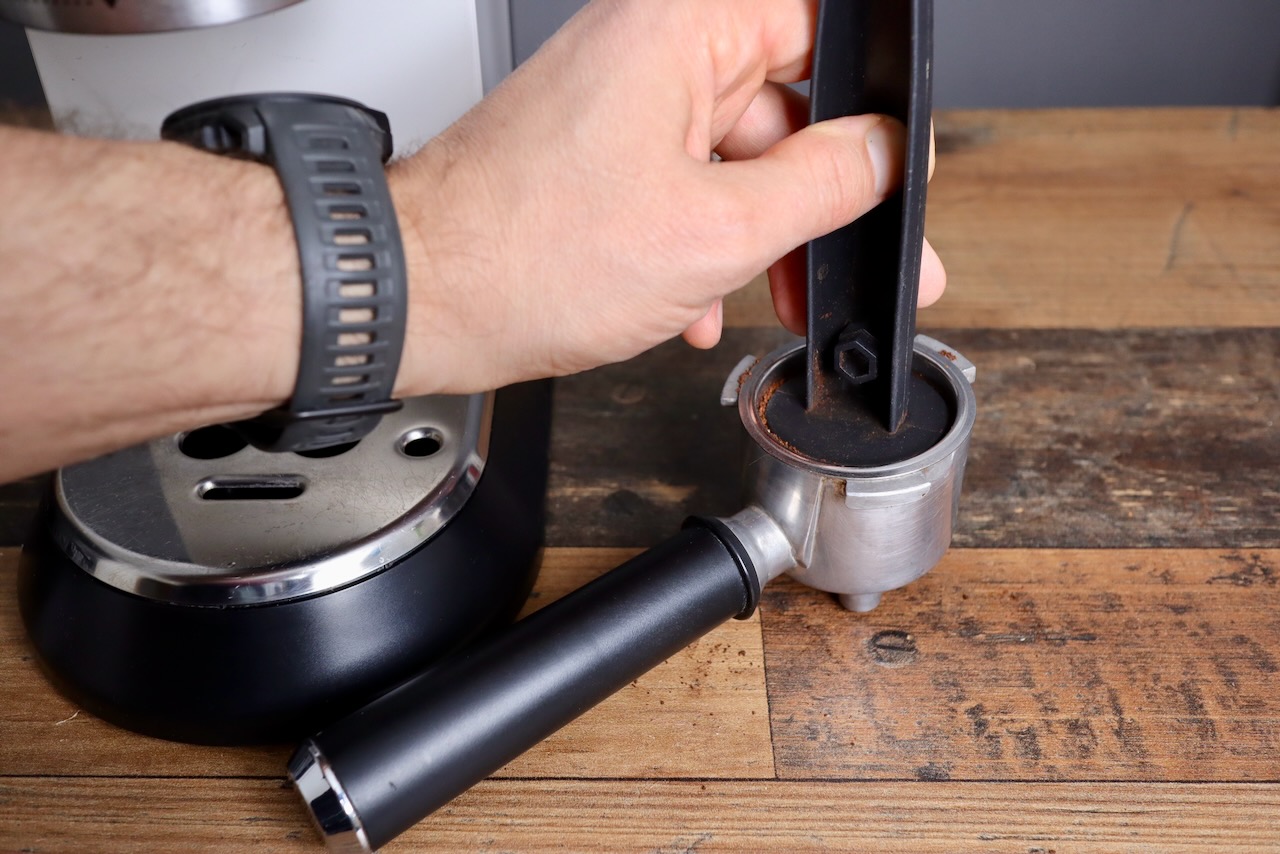
Delonghi Dedica using stock tamper
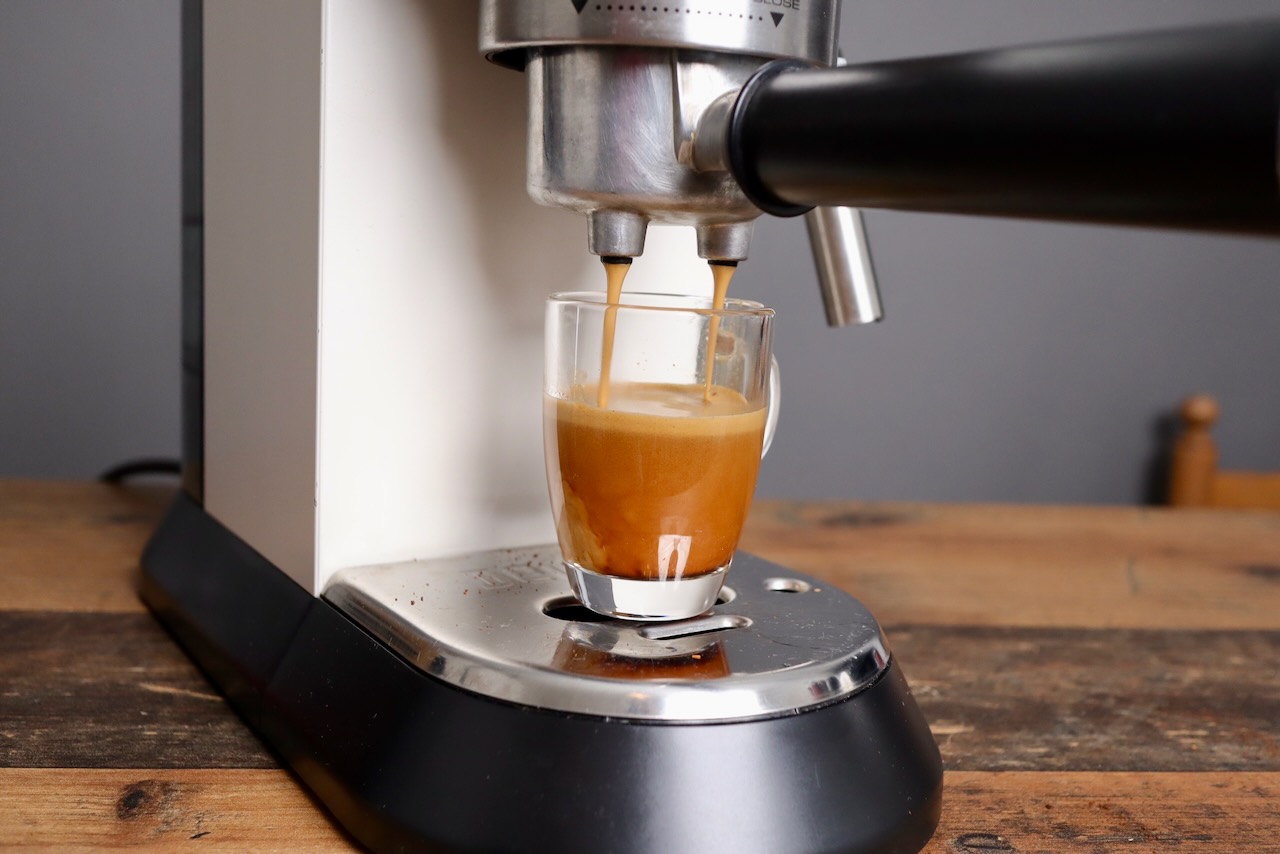
Basic Mode Espresso
Of course this is not the best method to use the machine in. Once the coffee beans have been ground, they lose aroma quickly. That’s why it’s better to use fresh, whole beans, which requires the advanced mode.
Espresso in Advanced Mode
This is where this little Delonghi really starts getting fun. Get yourself a capable little grinder, a bottomless portafilter so you can see your shots, and a nice IMS basket, and you’ll be getting beautiful espresso shots in no time.
Of course here it must be said that you need freshly roasted beans! You cannot do advanced mode with stale old beans, because beans create the crema. Think of old Christmas cookies. Do they taste good after 6 months? No, they have lost their aroma. Same thing goes for coffee beans. Use fresh ones!
As for dosing, try using 15 grams, ground fine enough, so that the espresso extraction takes about 25-30 seconds, and you get about 30 grams of espresso in your cup.
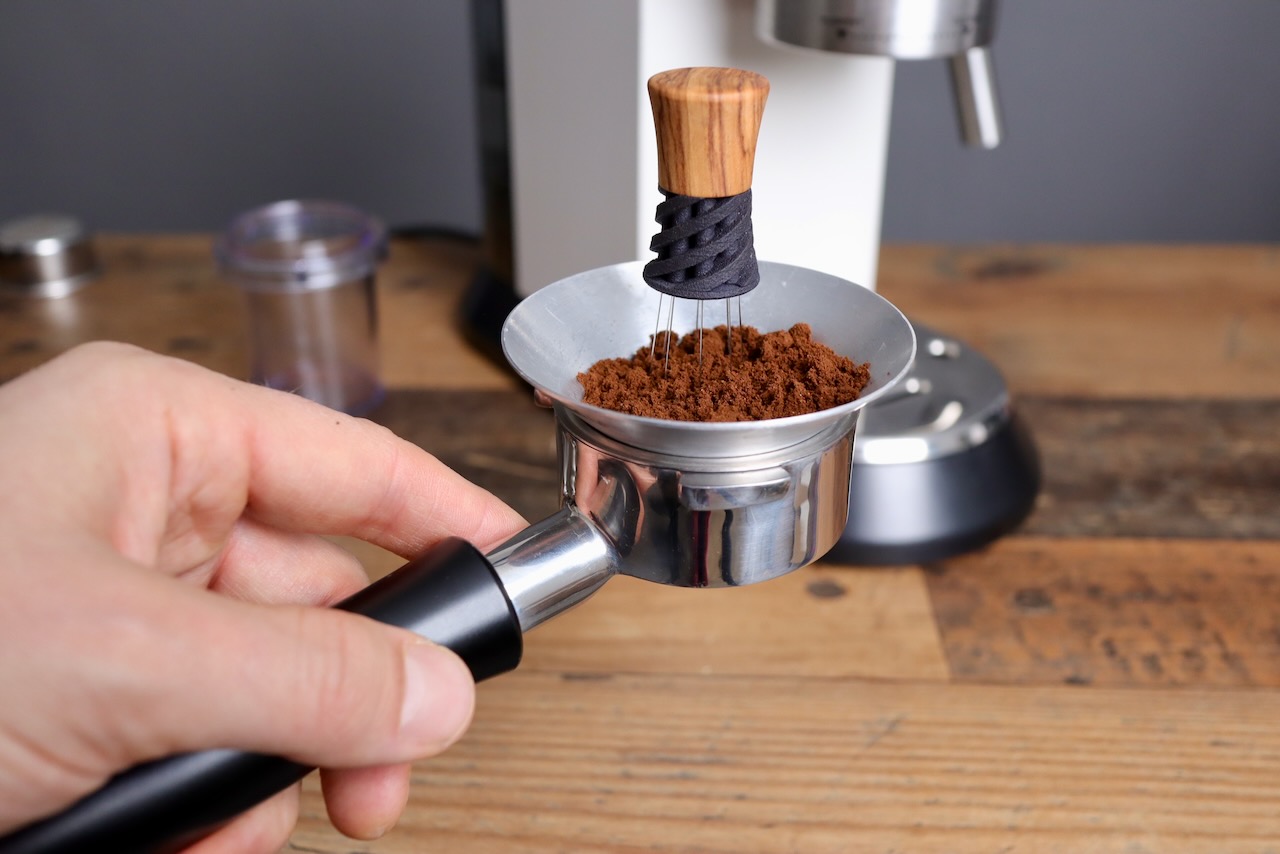
Using the WDT tool and a funnel to dose for the Delonghi Dedica
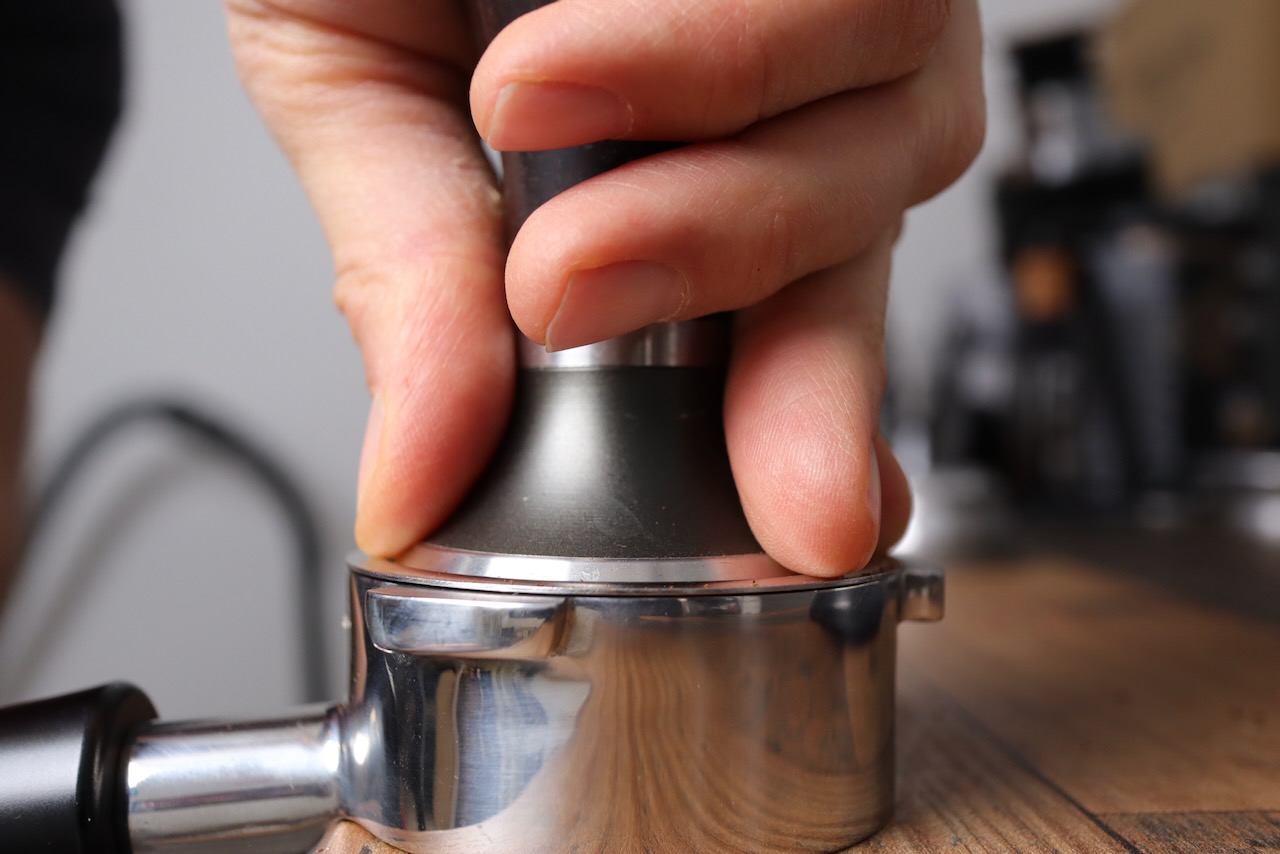
Tamping with a 51mm tamper in the Dedica
See the video below on how to use the Dedica in both basic and advanced mode.
Espresso with Coffee Pads?
People ask all the time whether the Dedica can do E.S.E. pads. The short answer – yes it can. And here I should talk about the accessories the machine comes with:
- Single, double and E.S.E. filter baskets
- Flimsy scoop with tamper
- 51mm portafilter
To use the Dedica with the coffee pads, simply insert a pad into the designated pressurized basket, and insert the portafilter into the machine. Then press the button for a 1 cup, and wait for the extraction to finish. Easy peasy, lemon squeezy.
How to use the Dedica for Milk Frothing?
Ok, so the Dedica may not have the best steam power in the world, but it does get the job done. Just check out all the videos of latte art on YouTube with the Dedica, and you’ll see it’s possible.
Milk Frothing in Basic Mode
Most beginner baristas start off with the panarello in what I call “basic mode.” This is with the outer shell of the panarello attached. This automatically injects a TON of air into the milk, so that you get a frothy mess of bubbles. This is not my favorite mode, because it’s really hard to get proper silky milk when frothing with this attachment on.
If you watch baristas at the coffee shops, they never use a panarello. Instead, they just use the steam directly coming out of the steam wand to texture milk. Watch them do it, the next time you’re at a nice coffee shop.
Milk Frothing in Advanced Mode
To steam milk in advanced mode with the Dedica EC680 or EC685, simply pull off the panarello. Next, use a little zip tie, to tighten the rubber nozzle onto the steam wand. Otherwise, it can get blown off while steaming.
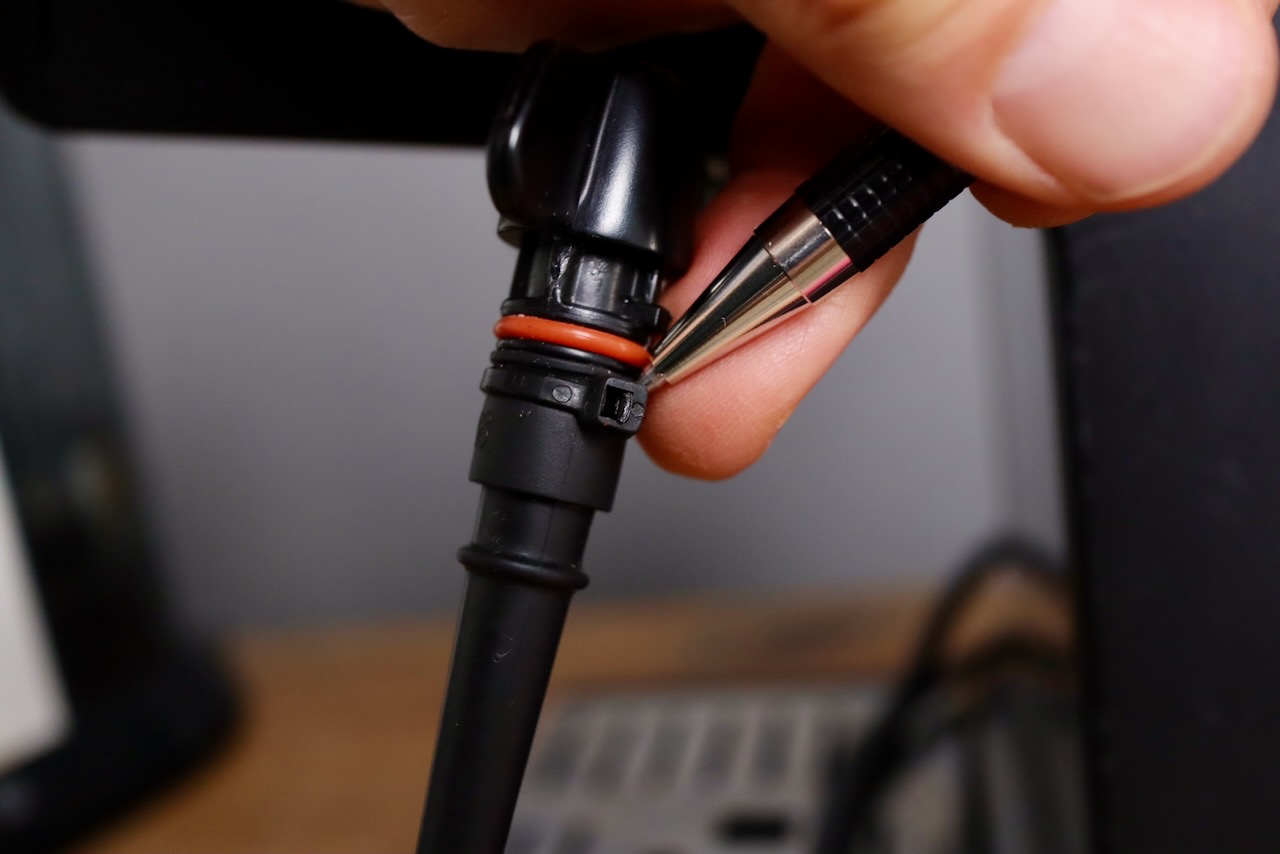
Small zip tie to keep the rubber nozzle on the Dedica
Place the steam wand tip just at the surface of the milk, and off to one side of the pitcher. Turn on the steam, and watch as the steam wand injects air into the milk’s surface. Once you have added enough volume to raise the milk about 1 cm (half an inch), put the steam tip in deeper into the milk, and let it roll in a vortex. This will allow the aerated milk to incorporate with the rest of the milk, and you’ll be left with some delightful, silky milk.
I find that steaming 200ml of milk up to about 60 degrees Celsius takes me about 45-50 seconds, and adds about 30ml of water to the mixture while steaming. In comparison, my Breville Dual Boiler also takes about 45 seconds to steam the same volume, and adds about 20ml of water to the milk while steaming.
Steaming with the EC885 is a little easier in my opinion, because it already comes with a proper steam wand. Check out the video below on how to steam with the Dedica Arte EC885.
Pros and Cons of the Dedica?
I’ll admit it, I’m partial to the Dedica. It was my first espresso machine, and it has served me well. It’s not fussy, it’s always just worked, and it’s given me many tasty shots over the years. That being said, it’s not without its deficits.
One thing lacking from the Dedica, and many other espresso machines in this price range, is a 3 way solenoid valve. These are built into the brew group of more expensive machines, and they allow the pressure on the puck to be released after the extraction. Since the Dedica lacks this, you have to wait 60 seconds, before removing the portafilter. If you don’t, hot espresso grounds and water will splatter everywhere.
Another thing about the Dedica is that its instructions are not very easy to read, nor intuitive. I always have to refer back to my “How to descale the Dedica” video (linked below), because I forget how to do it.
Finally, the Dedica is lacking enough temperature for some people. While I do think it does a good job for a thermoblock machine, it does not provide heat as well as say the ECP 3420, a boiler machine. Since the Dedica has a high pressure line running from the thermoblock to the brew group, the water loses some heat along the way, and also loses some heat to the unheated brew group.
All this being said, I still love the machine – mainly for it’s fast start-up time, and the fact that it’s just a nice ergonomic machine for me that never fails, has never leaked, and gives me decent shots.
Pros:
- Excellent value!
- Quick warm up time of 30 seconds!
- Good espresso and milk foam, especially in advanced mode.
- Lots of modifications and after market parts
- Lots of forums about the Dedica
- Good looks, and takes up little space
Cons
- No 3 way solenoid valve
- Temperature may not be hot enough for some people.
- Requires an aftermarket basket and tamper at least, to get the best results.
Specifications of the Dedica:
Let’s have a look at the specs below:
| Imperial | Metric | |
|---|---|---|
| Dimentions | 3″D x 5.9″W x 12″H | 149 x 330 x 305 mm |
| Weight | 9.3 lb | 4.2 kg |
| Basket size | 51mm | 51mm |
| Ulka Pump Max Pressure | 217 psi | 15 bar |
| Water tank capacity | 37 fluid oz | 1.1 liter |
How to Clean the Dedica
Cleaning the Dedica is easy. You can wipe it down with a damp towel, and clean the drip tray and water reservoir in mild soapy water. The most important thing is to remember to descale!
Descaling
Descaling your Dedica will prolong its life, and make sure to provide you with years of fine espresso. Just like you have to descale your water kettle, or your on demand tankless water heater, you have to do the same for ANY espresso machine.
If you don’t descale, your water lines can get clogged up like an artery, and you won’t get any pressure. OR, your heating element can get full of scale, and not work efficiently. Or, your pump or a valve could get jammed with scale. You get the idea.
Watch the short video below, which shows how to descale your Delonghi Dedica.
No Backflushing!
So I mentioned up above that the Dedica doesn’t have a 3 way solenoid. While it may be annoying that you have to wait 60 seconds to remove the portafilter, the good thing is, you don’t have to backflush! Yipee!
And to answer your question, no you cannot back flush, either. There’s no place for the water to be released to.
Modifying the Delonghi Dedica
One of the most awesome things about the Dedica, is the fact that it can be modified to be even better. You can add a bottomless portafilter, a different steam wand, even a dimmer switch, if you feel so inclined. Check the videos below for some inspiration.
Best accessories for the Dedica
You can use the Dedica out of the box, but it’s much better with a few accessories. At the very least, I’d suggest a nice Italian-made precision basket from IMS, and a decent tamper. If you want to see the beautiful espresso extraction, then go for a bottomless portafilter.
Of course you’ll also need a few other practical accessories, like a knock box for your spent pucks, a milk canister for steaming milk, and a funnel for getting all your grounds in your basket without making a mess. Finally, a WDT tool or shaker is also always a good choice to even out the distribution in your extractions.
EC680 vs EC685 Dedica Style
You can use the Dedica out of the box, but it’s much better with a few accessories. At the very least, I’d suggest a nice Italian-made precision basket from IMS, and a decent tamper. If you want to see the beautiful espresso extraction, then go for a bottomless portafilter.
Of course you’ll also need a few other practical accessories, like a knock box for your spent pucks, a milk canister for steaming milk, and a funnel for getting all your grounds in your basket without making a mess. Finally, a WDT tool or shaker is also always a good choice to even out the distribution in your extractions.
EC685 vs EC885 Dedica Arte
The EC885 finally offers some major value over its predecessors! It comes with a proper steam wand – no crappy panarello anymore! Also, the steam wand is non-burn, making it easier to clean, since the milk doesn’t get caked on due to the heat. I find the steam wand on the Dedica Arte to be the best of them all, but just know that the power is still not great. You’ll need to be patient in learning how to steam with it.
Alternatives: Breville Bambino Plus
The Breville or Sage Bambino Plus on the other hand offers amazing steam power! This little bugger is way better than the Dedica at milk steaming, making it almost too easy. It has loads of power, and a four hole steam wand tip, making it super easy to get a whirlpool going in the milk. Too bad it’s 2-3 times the price of the Dedica, depending on the market. But it is a nice option to consider if you have the money, for the sweet steam wand alone. I find the espresso between the Dedica and the Bambino Plus quite comparable.
New Dedica Maestro and Maestro Plus!
Delonghi sneakingly, and under the radar, released a BRAND NEW Dedica in Australia, months ago. I don’t know why it hasn’t hit Europe or North America yet??
The Dedica Maestro Plus comes with an automatic milk steaming wand, kind of like the Bambino Plus. The Dedica Maestro on the other hand just looks like a Dedica Arte, with the upgraded steam wand, and a slightly different user interface. The buttons are now on the top, and there’s an extra option for coffee.
Also, you can set the temperature easier, as there is now an indicator for that, as well as to descale your machine. I wish I knew when they were bringing this to Europe. Enjoy it, you Aussies!
Dedica FAQ
Q: What size tamper does the Dedica use? A: The Dedica uses a 51mm Tamper
Q: Where is the Dedica made? A: The Dedica is made in China
Q: Can the Dedica use E.S.E. pads? A: Yes, the Dedica comes with a basket for coffee pads
Q: Why is my Dedica flashing after milk steaming? A: It must be cooled down with flowing water! Active the water lever, to cool down the thermoblock.
Q: Where is it made? A: Delonghi is headquartered out of Treviso, Italy, which is just north of Venice. While the design of the Dedica is Italian, the manufacturing takes place in China.
Improvements
I find that for the price, there’s not much to complain about with the Dedica. Sure, it could deliver a little more heat, but you can combat that with a “steam mode hack.” Sure, it could include a 3 way solenoid, but then it would be more expensive, and you’d have to backflush it.
Honestly, I like the Dedica just as it is. Well, with the upgrades of course. :) But I always upgrade the basket and portafilter on every machine I use. And you?
So, is the Dedica worth it?
Heck yes. But that depends on your market. In Europe and North America, it’s a no brainer. I have heard however that in South America, Africa, and Asia, it can be 400% more expensive. If that’s the case, I’d suggest trying to find a cheaper option.
Make it this far to the end of the review? Feel free to send me a message, to let me know if it helped you!
